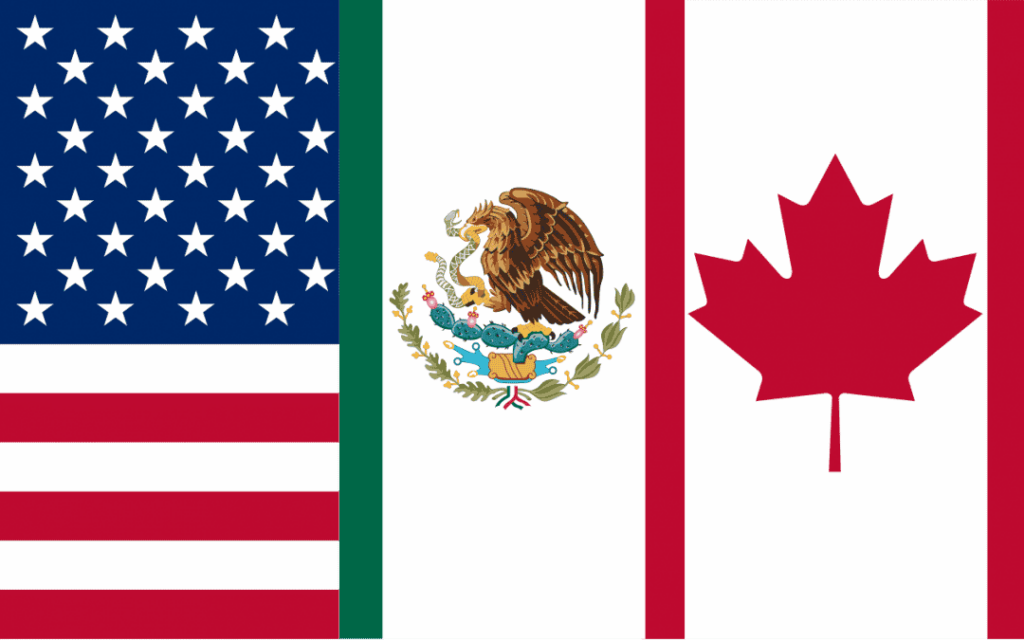12 USMCA Strategies You Can’t Ignore
We Revisit Practical Advice for NAFTA and how it applies to USMCA
It’s been a few months since USMCA officially became the new free trade agreement between the U.S., Canada, and Mexico. While we have seen a good number of companies jumping right in and adopting the new agreement, there may still be some out there that are waiting for January 1, 2021, thinking that maybe the 6 months in 2020 are just a trial or adoption period of some sort.
Regardless of what path your company has taken, if you are (or will) be making claims under USMCA, take this time to evaluate your trade procedures and improve on what you have already built with NAFTA or maybe even reboot your entire program. It is always good to review current policies and procedures which tend to get watered down with personnel and management changes.
A few years back we published an article providing NAFTA practical advice. We focused on 12 key areas that we would like to revisit and provide you with an updated list reflecting anything that may have changed or was affected by the USMCA agreement.
Together with John Goodrich, author of the book, “USMCA: A Practical Guide to Regulation, Documentation & Procedures”, we have put together the following.
1, You don’t “HAFTA” NAFTA
or now that NAFTA is gone, “you don’t HAFTA, FTA”. This may not be as catchy as timeless phrases like “Fake it till you Make it”, or my maxim, ‘Happy Wife, Happy Life”, but regardless, the fact remains that USMCA, like all free trade agreements, is a voluntary program. While there are incentives for participation, there are also good reasons to opt out. Check the duty rates in the destination country. You may find that your product may already be duty-free so it may not be worth going through the trouble of qualifying and claiming USMCA. Okay, one more, “NO WAY, to USMCA!”
2. Language matters.
Like NAFTA, the new USMCA uses some common words such as materials, goods, parties, territory, producer, exporter, and importer but with specific and limited definitions. For example, USMCA allows for COOs to be issued by a producer, exporter, or importer. If you are a recipient of a COO from a party that does not meet the definition of any of those roles, is the information reliable?
3. “A” is for audit
Preference criterion A (one of several codes USCMA allows you to assign to the method used to qualify your product) has limited use and is generally reserved for natural or agricultural products wholly from North America. When it comes to claiming, or using a document with “A”, you may want to “A”void, “and stay“A”way from using preference criterion A.
4. Don’t forget the processing fees.
Imports into the US are subject to a merchandise processing fee (MPF = .3464% min $27.23, max $528.33) while imports into Mexico are subject to derecho de trámite aduanero (DTA). USMCA originating goods are exempt from these fees. Even if your good has low or no duty, the elimination of these fees may be a benefit, and over time these fees may add up to significant savings.
5. Don’t sweat the small stuff.
The ten percent (up from seven percent under NAFTA) de minimis rule (i.e. non-originating parts/costs making up less than ten percent of the total cost) can simplify the origination process. If non-originating materials do not meet the tariff change rules they may be ignored, as long as their aggregate value does not exceed ten percent.
6. Solicitation is legal under USMCA
It is encouraged and necessary in many cases to provide product origination. Up and down the supply chain you will want to support your USCMA statements by obtaining certification of origin for the materials you consume in your production and the goods you export. Without the proof, you should refrain from issuing a COO yourself.
7. Keep it simple.
Too often, parties pester their entire supplier base for COO’s when focusing on key suppliers would be as effective. Originating the primary materials within a product may help achieve a simple regional value content requirement. A producer subject to tariff change rules may only need to solicit COO’s from producers of materials subject to the rule.
8. Money Matters
Some of the more subtle changes to USMCA are found in the methods for calculating regional value content. Import duty, for example, may be deducted from the value of a non-originating material. Doing so might help a company meet a regional value content requirement under USMCA that was unachievable under NAFTA. It might also help the producer of the automotive part that must now hit a significantly higher regional value content.
9. No HTS code? No USMCA
Most of the preference criteria require an understanding of the HTS (the HTS is based on the international Harmonized Commodity Coding and Classification System or “HS”, which has been established by the World Customs Organization). Virtually all countries base their tariff schedules on the HS, making it easier to conduct international trade. Some require producers to identify the HTS codes of non-originating materials used within their goods. Without a robust, accurate classification process, a company should not participate in the USMCA.
10. A part may not be a part
Tariff change rules usually require materials classified as parts of goods to originate in North America. This can be a stumbling block for producers. There exists a pervasive misuse and overuse of the parts classification provisions within the tariff. What producers refer to as a “part” is frequently, specifically provided for elsewhere within the harmonized tariff. Proper classification of materials, ingredients, and other components will simplify the USMCA origination process.
11. No Certification? No USMCA
The importer must have a COO before making a USMCA duty-free claim. Unlike NAFTA there is no longer a formal Certificate of Origin (COO). USMCA refers to the document as a Certification of Origin (the same acronym thank goodness!) However, USMCA dictates 9 minimum data elements setting the theme forth in Annex 5-A and Chapter 5. Download this cheat sheet from CBP. Incomplete or inaccurately completed forms may cause the importer’s USMCA claim to be denied. The instructions are printed on the back of the form. Also unlike NAFTA which required the COO to be issued by the exporter, an importer may provide its own COO or use one provided by the producer.
12. COOs are not shipping documents.
Too frequently, organizations assign completion of the COO to untrained, front-line individuals. The COO should be treated as a controlled business document not unlike contracts, checks, or tax documents. Only authorized, empowered, knowledgeable, and responsible staff should be allowed to complete and sign the document.

USMCA Course
Issuing a USMCA origin statement represents a firm’s commitment to understanding the rules of origination, record keeping, and legal obligations. Our USMCA Rules of Origin Course provides the information you need to make decisions that will ensure your compliance with USMCA’s rules, U.S. Customs and Border Protection’s regulations while benefiting your supply chain and your customers.








